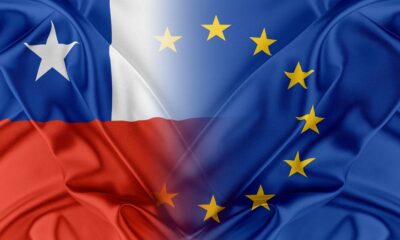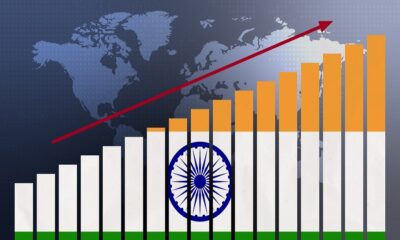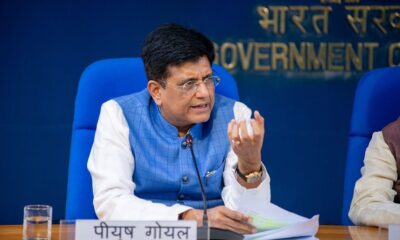Fashion
US tariff blow puts Indian MSMEs on the brink
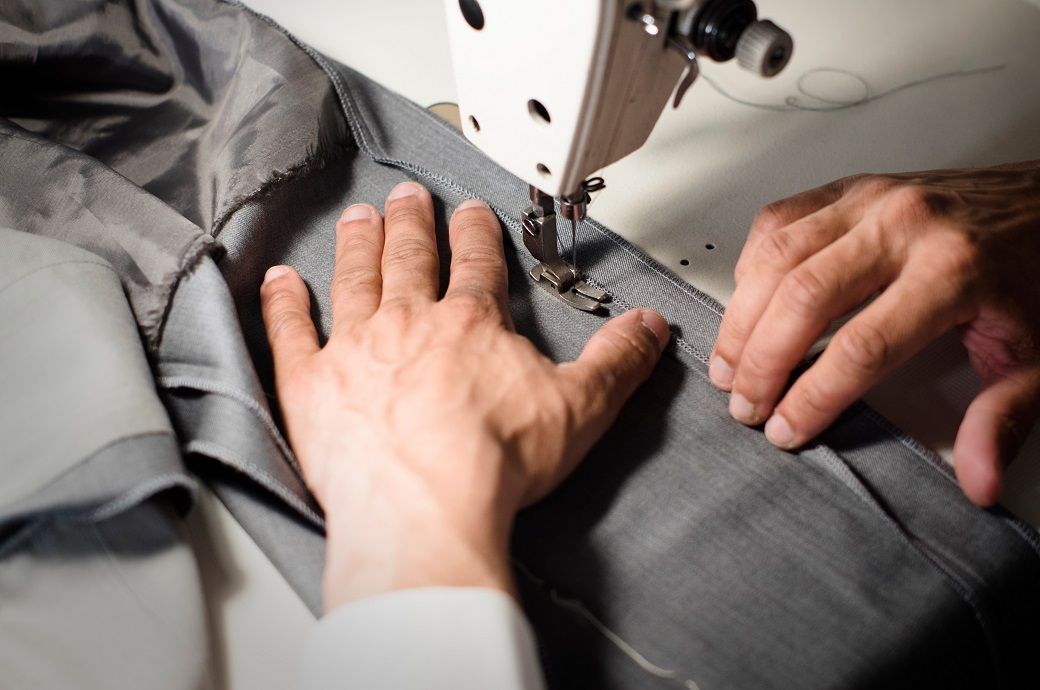
The United States’ decision to impose an additional 25 per cent tariff on Indian imports, raising the total duty to 50 per cent, is sending shockwaves through India’s business landscape.
The US’ imposition of 25 per cent additional tariff on Indian imports has raised the total duty to 50 per cent, creating deep uncertainty for the MSMEs.
As per reports, Panipat and Ludhiana are amongst the hardest hit by the US tariffs.
However, the latest media reports suggest the government is now planning dedicated outreach programmes in 40 countries to counter the steep US tariffs.
Reports indicate nearly 50 per cent of India’s exports to the United States, valued at around $87.3 billion, will face the steep 50 per cent tariff. This will significantly impact the key sectors, including textiles and apparel, gems and jewellery, seafood, and leather goods.
Meanwhile, analysts estimate a GDP reduction between 0.2 per cent and 1 per cent in FY26, with a potential economic contraction of $7 billion to $25 billion, depending on price adjustments and finding new markets while a CRISIL report highlighted that higher US tariffs will have a significant impact on India’s MSME sector, which accounts for approximately 45 per cent of the country’s total exports. Among the hardest hit will be textiles and gems & jewellery, which together make up an estimated 25 per cent of India’s exports to the US.
In cities like Panipat and Ludhiana — two major industrial hubs and home to a large number of MSMEs— the abrupt escalation of US tariffs has triggered a fresh wave of uncertainty, particularly among MSMEs, which form the backbone of the export economy.
Known as India’s “Textile City,” Panipat in Haryana is globally recognised for its production of yarn, home textiles, and recycled fabrics. However, since the imposition of the initial 25 per cent reciprocal tariff by the US, Panipat’s supply chains had been facing serious disruptions, and now, with the additional 25 per cent tariff coming into effect, the implications are going to be devastating expressed fears some industry stakeholders interacting with Fibre2Fashion.
Panipat’s yarn industry, which boasts an annual turnover of about ₹60,000 crore, relies on exports worth ₹20,000 crore — 60 per cent of which are destined for the US, as per some estimates. This makes the city one of the most exposed to Washington’s aggressive trade stance. Already strained by ongoing global crises such as the Russia-Ukraine conflict, high freight costs, and inflation in key international markets like Europe and South America, the industry is struggling to absorb yet another external shock.
For the city’s yarn spinners, exporters, and small-scale crafters, the implications are dire. Increased duties mean Indian products will be significantly less competitive in the US market. Order volumes are expected to drop drastically as American buyers seek cheaper alternatives in other countries. Local businesses, especially the smaller ones, are worried about payment delays, the spectre of cancelled contracts and mass layoffs.
Meanwhile, Ludhiana, an important export hub in the state of Punjab, is also said to be facing its own set of challenges. The city, which exports a wide range of goods including textiles, hosiery, auto parts, hand tools, and machinery, is said to be staring at a revenue loss of over ₹10,000 crore because of the US tariffs, as per some estimates.
According to reports, more than 300 companies in Ludhiana are directly engaged in trade with the American market, and the sudden cost escalation will only push them into crisis mode. With roughly ₹6,000 crore worth of textile and hosiery goods shipped annually to the US, as per some estimates, the stakes for Ludhiana’s manufacturers could not be higher.
The tariffs come at a time when exporters in Ludhiana are already under pressure from fluctuating demand, rising input costs, and stiff global competition. The industry now faces the grim prospect of large-scale order cancellations, job loss and even existential threat for some.
However, there now appears to be a glimmer of hope. According to the latest media reports, the Government is now planning dedicated outreach programmes in 40 countries to counter the steep US tariffs. The list reportedly includes key markets such as Australia, Belgium, Canada, France, Germany, Italy, Japan, Mexico, Poland, Russia, Spain, South Korea, Turkiye, the Netherlands, the United Arab Emirates, and the United Kingdom.
Experts have long emphasised that diversifying into new markets and exploring alternative geographies is crucial for survival, and with the Government’s active help, hopefully the industry is able to navigate its way out of the crisis soon.
Fibre2Fashion News Desk (DR)
Fashion
U.S. Black Friday online sales hit record $11.8 billion, Adobe reports

By
Reuters
Published
December 1, 2025
American shoppers spent a record $11.8 billion online on Black Friday, up 9.1% from last year, final data from Adobe Analytics showed.
Adobe Analytics, which tracks over 1 trillion U.S. retail site visits, expects shoppers to spend $5.5 billion on Saturday and $5.9 billion on Sunday, up 3.8% and 5.4% from a year earlier respectively.
Separately, software firm Salesforce reported that American consumers had spent $18 billion on Black Friday purchases, up 3% from a year ago, with luxury apparel and accessories among the most popular categories.
Although U.S. consumers spent more this Black Friday compared to last year, price increases hampered online demand, according to Salesforce, with shoppers purchasing fewer items at checkout compared to last year.
At physical stores, the bargain-chasing was relatively subdued on post-Thanksgiving morning, with some shoppers saying they feared overspending amid persistent inflation, trade policy-driven uncertainty, and a soft labor market.
Cyber Monday, traditionally a big day for online deals, is expected to be the season’s biggest online shopping day again, Adobe projects, driving $14.2 billion in spending, up 6.3% from last year.
© Thomson Reuters 2025 All rights reserved.
Fashion
Mielle becomes NFL’s first textured haircare partner

Published
December 1, 2025
Textured haircare brand Mielle has launched a new partnership with the National Football League, marking the League’s first collaboration with a textured haircare company.
The campaign aims to support the millions of NFL fans with textured hair—women now make up about half of the NFL’s fanbase—while addressing the unique hair challenges faced by athletes wearing helmets, including dryness, breakage and frizz.
The partnership expands Mielle’s growing footprint in professional sports and is designed to boost representation, access to high-quality care, and product innovation for textured-hair athletes and fans.
“The NFL is excited to have Mielle, a brand that is committed to performance, community, and empowering fans and athletes, lean into the NFL partnership” said Tracie Rodburg, SVP global partnerships, NFL.
“This partnership aligns with the league’s mission to build lasting connections within our communities nationwide and celebrate the self-expression of our players and fans.”
The P&G brand says the collaboration gives Mielle a major platform to showcase the performance of its dermatologist-reviewed, Skin Health Alliance–accredited formulas under real athletic conditions.
“We’re honored to be the first textured hair care partner of the NFL through our partnership with P&G,” said Monique Rodriguez, founder and CEO, Mielle. “For so many of us, football represents family and community. It’s attending cookouts, tailgates, reconnecting with family and friends, and showing up in your favorite team colors. And for millions of fans, that includes twisting, braiding, and caring for your textured hair before kickoff.”
The announcement is accompanied by a social-first campaign, including the viral “Passing the Phone” video moment featuring talents across the league from including players, executives and agents, to players’ families and on-air talent.
Copyright © 2025 FashionNetwork.com All rights reserved.
Fashion
India’s logistics push puts fashion in the fast lane
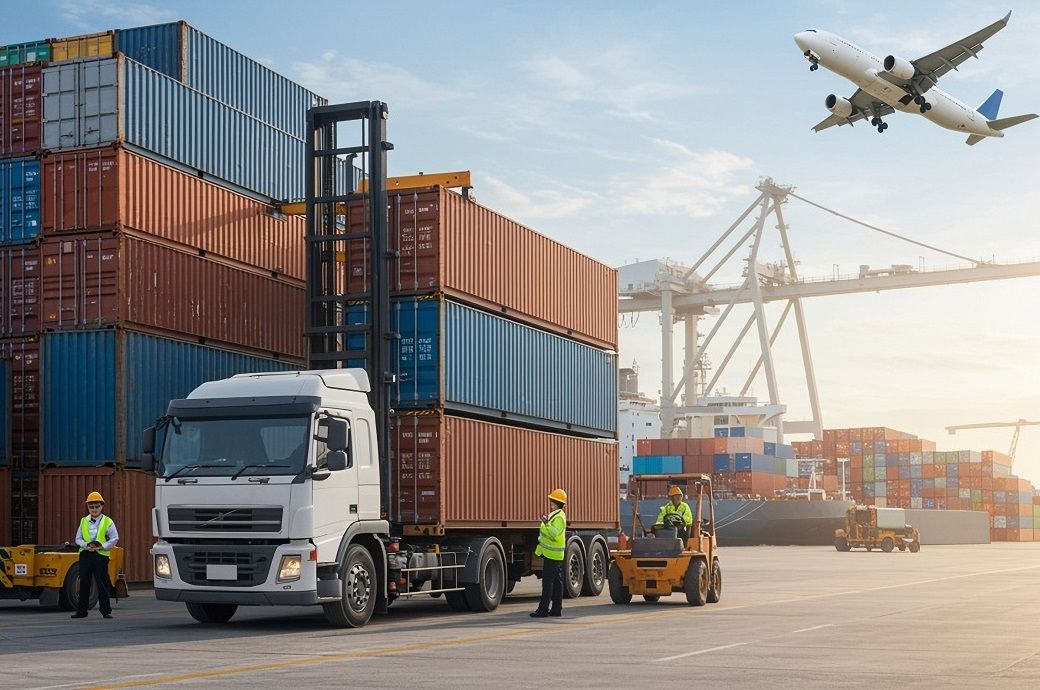
The government’s three-year scorecard backs this up. Since its launch in September ****, ULIP has integrated more than thirty logistics and customs systems and clocked over *.* billion (***+ crore) API transactions as of around August ****, effectively treating data flows like rails. LDB, operational since July ****, has cumulatively tracked over ** million EXIM containers across *** inland container depots (ICDs) by around August ****, turning container visibility from a premium add-on into the default. A Transportation Emissions Measurement Tool (TEMT), developed by IIM Bangalore and partners and endorsed by DPIIT, now gives exporters an ISO-*****-aligned way to report logistics emissions, so freight can sit alongside product footprints in sustainability dossiers.
From Map to Mill Gate: What Gati Shakti Has Actually Changed
-

 Sports1 week ago
Sports1 week agoWATCH: Ronaldo scores spectacular bicycle kick
-

 Entertainment1 week ago
Entertainment1 week agoWelcome to Derry’ episode 5 delivers shocking twist
-

 Politics1 week ago
Politics1 week agoWashington and Kyiv Stress Any Peace Deal Must Fully Respect Ukraine’s Sovereignty
-

 Business1 week ago
Business1 week agoKey economic data and trends that will shape Rachel Reeves’ Budget
-

 Politics1 week ago
Politics1 week ago53,000 Sikhs vote in Ottawa Khalistan Referendum amid Carney-Modi trade talks scrutiny
-

 Tech6 days ago
Tech6 days agoWake Up—the Best Black Friday Mattress Sales Are Here
-

 Fashion1 week ago
Fashion1 week agoCanada’s Lululemon unveils team Canada kit for Milano Cortina 2026
-

 Tech23 hours ago
Tech23 hours agoGet Your Steps In From Your Home Office With This Walking Pad—On Sale This Week


